Percentage Worksheet-3
-
The price of a table is Rs. 400 more than that of a chair. If 6 tables and 6 chairs together cost Rs. 4800, by what percent is the price of the chair less than that of the table?
(a) 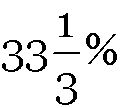 (b) 50% (c)
(b) 50% (c) 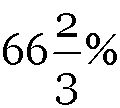 (d) None of these
(d) None of these
-
In a recent survey, 40% houses contained two or more people. Of those houses containing only one person, 25% were having only a male. What is the percentage of all houses, which contain exactly one female and no males?
(a) 15 (b) 40
(c) 75 (d) Can't be determined
(e) None of these
-
In a city, 40% of the people are illiterate and 60% are poor. Among the rich, 10% are illiterate. What percentage of the poor population is illiterate?
(a) 36% (b) 40% (c) 60% (d) None of these
-
Of the 1000 inhabitants of a town, 60% are males of whom 20% are literate. If, of all the inhabitants, 25% are literate, then what percent of the females of the town are literate?
(a) 22.5 (b) 27.5 (c) 32.5 (d) 37.5
-
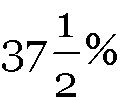 of the candidates in an examination were girls, 75% of the boys and
of the candidates in an examination were girls, 75% of the boys and 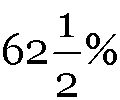 of the girls passed and 342 girls failed. The number of boys failed was:
of the girls passed and 342 girls failed. The number of boys failed was:
(a) 350 (b) 360 (c) 370 (d) 380
-
 part of the population in a village are males. If 30% of the males are married, the percentage of unmarried females in the total population is:
part of the population in a village are males. If 30% of the males are married, the percentage of unmarried females in the total population is:
(a) 20% (b) 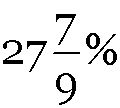 (c) 40% (d) 70%
(c) 40% (d) 70%
-
In a city, 35% of the population is composed of migrants, 20% of whom are from rural areas. Of the local population, 48% is female while this figure for rural and urban migrants is 30% and 40% respectively. If the total population of the city is 728400, what is its female population?
(a) 324138 (b) 349680 (c) 509940 (d) None of these
-
The boys and girls in a college are in the ratio 3 : 2. If 20% of the boys and 25% of the girls are adults, the percentage of students who are not adults is:
(a) 58% (b) 67.5% (c) 78% (d) 82.5%
-
A man bought a house for Rs. 5 lakhs and rents it. He puts
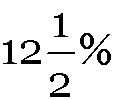 of each month's rent aside for repairs, pays Rs. 1660 as annual taxes and realises 10% on his investment thereafter. The monthly rent of the house is:
of each month's rent aside for repairs, pays Rs. 1660 as annual taxes and realises 10% on his investment thereafter. The monthly rent of the house is:
(a) Rs. 2460 (b) Rs. 2500 (c) Rs. 4920 (d) Rs. 5000
-
A debtor can pay 87 paise in the rupee, but if his creditors would take 20% of his debts, he could pay them and have Rs. 42 left. His debts and assets respectively are:
(a) Rs. 400, Rs. 520 (b) Rs. 500, Rs. 521
(c) Rs. 600, Rs. 522 (d) Rs. 1000, Rs. 525
-
If the price of a book is first decreased by 25% and then increased by 20%, then the net change in the price will be:
(a) No change (b) 5% increase
(c) 5% decrease (d) 10% decrease
-
The price of a shirt is increased by 15% and then reduced by 15%. The final price of the shirt:
(a) does not change (b) increases by 2.25%
(c) decreases by 2.25% (d) None of these
-
A number is decreased by 10%' and then increased by 10%. The number so obtained is 10 less than the original number. What was the original number?
(a) 1000 (b) 1050 (c) 1500 (d) 2000
-
The price of an article was increased by r%. Later the new price was decreased by r%. If the latest price was Re. 1, then the original price was:
(a) Rs. 1 (b) Rs. 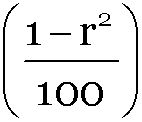
(c) Rs. 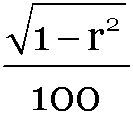 (d) Rs.
(d) Rs. 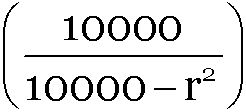
-
Peter could save 10% of his income. But two years later when his income is increased by 20%, he could save the same amount only as before. By how much percent has his expenditure increased?
(a) 22% (b) 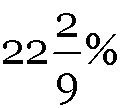 (c)
(c) 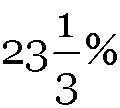 (d) 24%
(d) 24%
Answer Key:
(1)-c; (2)-e; (3)-c; (4)-c; (5)-d; (6)-b; (7)-d; (8)-c; (9)-c; (10)-c; (11)-d; (12)-c; (13)-a; (14)-d; (15)-b
 (b) 50% (c)
(b) 50% (c)  (d) None of these
(d) None of these of the candidates in an examination were girls, 75% of the boys and
of the candidates in an examination were girls, 75% of the boys and  of the girls passed and 342 girls failed. The number of boys failed was:
of the girls passed and 342 girls failed. The number of boys failed was: part of the population in a village are males. If 30% of the males are married, the percentage of unmarried females in the total population is:
part of the population in a village are males. If 30% of the males are married, the percentage of unmarried females in the total population is: (c) 40% (d) 70%
(c) 40% (d) 70% of each month's rent aside for repairs, pays Rs. 1660 as annual taxes and realises 10% on his investment thereafter. The monthly rent of the house is:
of each month's rent aside for repairs, pays Rs. 1660 as annual taxes and realises 10% on his investment thereafter. The monthly rent of the house is:
 (d) Rs.
(d) Rs. 
 (c)
(c)  (d) 24%
(d) 24%